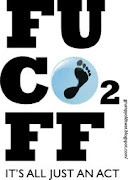Yesterday Anna Racoon posted one of those incredible photographs that tell a story without using a single word - a Brazilian dog sitting by a freshly filled grave marked simply '305', with rows of empty graves stretching away behind it - and remarked that the media seem to have found it easier to get article after front page after article on the floods in Queensland, where the loss of life has been relatively light. I left a comment mentioning that I'd had similar thoughts.
So is there really a disparity? Naturally the Australian media have given over whole column inches, if not yards, and a lot of airtime to the floods in Queensland, but Brazil? Well, to be honest there were already ten times as many dead there before I was even aware from the Aussie media that Brazil was also experiencing flooding. I think they can be forgiven, especially as bad weather has also been hitting New South Wales, South Australia and my own state of Victoria, now experiencing record floods in places. From the point of view of the media here billions of dollars of damage has been done, thousands of homes are damaged or destroyed, about 200,000 people have been affected and tragically Queensland has 30 or more dead to bury with a similar number still missing. And as more rain falls in the south it may not be over yet. Hardly surprising that Brazil's floods aren't making much noise here despite the greater death toll - it's harder to focus on someone else's tragedy far away when one of your own is unfolding on your doorstep.
Hoping for better elsewhere I've been having a look at news media further afield, testing them by putting 'flood' into their search tools to see what comes up and ignoring any domestic stories. The disparity is hard to argue. In the UK The Telegraph's ten results contained 3 stories about the floods in Australia and 1 each about those in Brazil and the Philippines (yeah, I didn't know either, but like Queensland it's apparently been going on for weeks); The Mail had 8 stories mentioning the Australian floods and 2 about California (2 dead there); The Grauniad had 5 Oz linked results including a passing mention in a business article and a letter, but only 1 Brazil article; The Indie had 2 Australias and a Sri Lanka (somewhere else I didn't know about). Across the ditch The New Zealand Herald has 16 stories about Australian floods with no mention of any anywhere else, The Times had just a pair of Oz related links, and The Dominion Post has 8 items about the Australian floods. Hmmm, a little embarrassing, although Britain and Australia have historic connections and Mrs Windsor is still the head of state, and of course the Kiwis are next door(ish) and have sent help. Okay, what about elsewhere? Well, in the US The NY Times had 3 Aussie, 1 Brazil and 1 Pakistan flood story, plus an op-ed mentioning both Australia and Brazil; The Washington Post had 3 Aussie, 1 Brazil and a South Africa; The LA Times and Chicago Tribune both had 1 Aussie, 1 Brazil, 1 Pakistan and 1 South Africa each, In Canada The Vancouver Sun had 4 Aussie, 2 Brazil and a mention of Sri Lanka; there were 4 Oz and 1 Brazil stories at The Calgary Herald; and The Toronto Star offered 9 on Australian flooding, 2 on Brazil and a blog piece about La Niña which mentioned both plus Sri Lanka. Going to Google News UK there were 8 items on Australian floods, and one each for South Africa and the Philippines, and I don't know whether to laugh or cry at the fact that Google.co.uk's auto-complete for 'Brazil' has 'Brazilian floods' behind both 'Brazilian wax' and 'Brazilian blow dry'. I wish I were making that up.
With a couple of exceptions the English speaking media haven't exactly covered themselves with glory, and haven't covered all the flood disasters going on either. One, which shall remain nameless, gave more results relating to Toby Flood than all the publications I looked at between them managed about the flooding in the Philippines, where 1.6 million small, brownish non-English speakers have been affected and more than 50 drowned. Oh, alright, it was The Mail.
So is it an Anglosphere thing, a tendency of the media in English speaking countries to concentrate on home first, people wot sound like we do second, people that live in places we get holiday advertisements for third, and last of all people who sound funny and have unpronounceable names? I'm sure there is an element of that – the media has a target audience and they'll run with what they think will most interest their readers or viewers, especially if it's a commercial outfit that needs to make a quid. And then there's the language barrier. Coverage of Brazil means subtitles and translators, which aren't necessary in Australia. And that's for a European language that's one of the most widely spoken in the world. When it comes to dealing in Filipino or Tamil or the half dozen or so languages that could be encountered in Pakistan it might seem like hard work compared to bunging Channel 9 a few quid for, say, five minutes of Queensland flood footage plus Tracy Grimshaw voiceover. The same applies elsewhere: go to the Portuguese Google and put in ‘inundação’ and the situation is more or less reversed. For speakers of either language the news that moves us is where the faces and voices of the dead and dispossessed could almost be those of neighbours and family.
But to be fair to the media I think there’s something about expectations too.
I love a sunburnt country,Those words probably aren't very well known outside Australia, and even here I'm not certain the first part (actually the poem's second stanza) isn't known mainly for being stamped on a manhole cover by Sydney's main ferry terminal. That's a shame because Mackellar's poem paints a more accurate picture of the wide, brown land than we Brits usually keep in our heads. Our impressions are influenced by photos of clear skies over Ayers Rock and spindly gum trees in the desert, by Kuoni brochures showing camels crossing orange sands, by The Sundowners for Baby Boomer types, Crocodile Dundee and Skippy the Bush Kangaroo for the Gen Xers, and Hugh and Nicole embracing over a parched landscape, and of course by Neighbours and Home and Away for, well, nearly everybody but me, apparently. The sun generally shines in Ramsey Street, Skippy spent all his time bouncing around rocks and scrub, and the two movies both featured bush fires - something that makes headlines in real life from time to time. I've found out since that there’s more to it and that when it rains in Oz, oh boy, can it rain!
A land of sweeping plains,
Of ragged mountain ranges,
Of droughts and flooding rains.
I love her far horizons,
I love her jewel-sea,
Her beauty and her terror -
The wide brown land for me!
...
Core of my heart, my country!
Her pitiless blue sky,
When sick at heart, around us,
We see the cattle die-
But then the grey clouds gather,
And we can bless again
The drumming of an army,
The steady, soaking rain.
Core of my Heart, aka My Country - Dorothea Mackellar, 1911
Now Brazil floods a lot - using Google's timeline I found news articles reporting deadly flooding there almost every year for the past decade. Over the same time various parts of Australia will have flooded - Melbourne's Elizabeth Street a couple of times that I know of - but the big difference is that there probably wasn't lots of damage and few, if any, deaths. Compare that to the Black Saturday bush fires two years ago when 173 died and billions of dollars burned. Now be honest, which of those two natural forces do you associate with Australia? Exactly, so when an area the size of two European nations is under water here many will consider it newsworthy. While it's terribly unfair on the people living there, when mud pours down the streets of Rio the likely reaction is almost, "What, again?" You expect natural disasters in some parts of the world and especially in the tropics, but it's easy to forget that a large chunk of Australia is in the tropics too.
We're a physically large but socially and economically small nation, a circle of coastal cities and fertile land surrounding an area so empty that in parts you can feel like the last person left alive. We're a long way from everywhere else in the industrialised world, you can't even fly direct to the nation's capital, and we've got an anti-social time zone. Even our Kiwi neighbours are 3 hours flying time from the eastern states - more than twice that from Perth - while for North America and Europe we're talking give or take a day or more after adding on all the airport security and wishing your luggage would hurry up. Four or five million a year come and see the place for themselves, but for everyone else it's easy to become conditioned to think of Australia as being drier than the proverbial camel's undies and permanently ready to burn. The reality, especially for the tropical northern end of Australia, is more as Mackellar described it: a land of droughts and flooding rains, times of dying cattle followed by gathering storm clouds. However, "This Stuff Just Happens Sometimes" doesn't look nearly as good on page one above the fold as "Australia's Sunshine State Battles Flood Disaster" next to a photo of a dead kid who begged rescuers to save his little brother first.


















